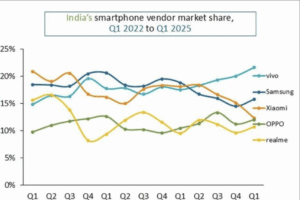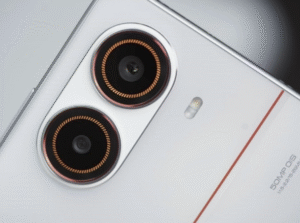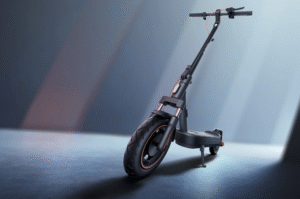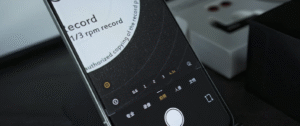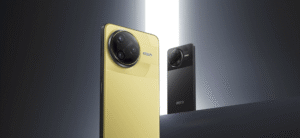HyperOS 3 vs iOS 18.4: Which OS Wins in 2025?
Introduction: HyperOS 3 vs iOS 18.4 – The Ultimate OS Battle
In 2025, the battle between smartphone operating systems is fiercer than ever, with Xiaomi’s HyperOS 3 and Apple’s iOS 18.4 leading the charge. HyperOS 3, paired with Android 16, promises a seamless and customizable experience, while iOS 18.4 brings refined features and Apple Intelligence enhancements. But which OS is better for you? In this detailed HyperOS 3 vs iOS 18.4 comparison, we’ll explore their features, performance, customization, and more to help you decide. Let’s dive in on xiaomiforall.com!

Performance and Stability: Speed and Efficiency Compared
Both HyperOS 3 and iOS 18.4 are built for speed, but they approach performance differently. HyperOS 3, running on Android 16, introduces HyperCore technology, which reduces CPU idle time by 19% and improves memory latency, as noted in Xiaomi’s recent updates. This makes multitasking on devices like the Xiaomi 15 Ultra smoother, especially for gamers and power users. The OS also leverages sophisticated blur effects, aligning with Android 16’s design overhaul, which adds visual depth without sacrificing performance.
iOS 18.4, released in early April 2025, focuses on stability with bug fixes and security updates. It addresses issues like unexpected restarts on iPhone 16 models and improves camera performance in macro mode. However, iOS 18.4 lacks new Apple Intelligence features for Siri, as Apple has delayed those until later updates. In performance tests, iOS 18.4 maintains Apple’s signature smoothness, but HyperOS 3’s optimizations give it a slight edge in resource-heavy tasks like gaming on devices with Snapdragon 8 Elite chipsets.
Verdict: HyperOS 3 takes the lead in performance for power users in this HyperOS 3 vs iOS 18.4 comparison, while iOS 18.4 excels in stability.
Customization: Flexibility vs Simplicity
Customization is a key battleground in the HyperOS 3 vs iOS 18.4 debate. HyperOS 3 builds on Xiaomi’s legacy of flexibility, offering extensive lock screen options, including the ability to place three widgets under the clock (compared to iOS’s single widget). You can also add effects like blur and carousel to your lock screen wallpaper, making it highly personalized. The Control Center in HyperOS 3 is intuitive, with a drag-and-drop system for adding and removing controls directly—no need for a separate editing mode like iOS 18.4’s Control Gallery.
iOS 18.4 allows users to customize icon colors, positions, and sizes on the home screen, a feature introduced in iOS 18. It also lets you resize Control Center controls, such as Dark Mode and Flashlight, for easier access. However, iOS 18.4’s customization still feels restrictive compared to HyperOS 3. For example, HyperOS 3’s ability to group controls and adjust icon sizes intuitively outshines iOS’s more rigid design choices.
Verdict: HyperOS 3 wins for customization in the HyperOS 3 vs iOS 18.4 showdown, offering more flexibility for users who love to personalize their devices.
Features and AI: Innovation at Its Best
HyperOS 3 introduces several user-centric features, including a revamped Control Center with a ripple effect for volume control, a feature inspired by iOS 18 but executed with more flair. It also adds native Wi-Fi file sharing with password protection, improving on previous methods like ShareMe. HyperOS 3’s HyperMind AI enhances system efficiency, smartly distributing resources for gaming and multitasking, as seen in the Xiaomi Game Turbo mode.
iOS 18.4 brings practical updates, such as integration for Japanese “My Number Card” Digital IDs in the Wallet app and support for robot vacuum systems in the Home app. The Photos app, redesigned in iOS 18, now supports ISO 21496-1 gain map for cross-platform HDR compatibility. However, iOS 18.4’s lack of new Apple Intelligence features—like advanced Siri updates—makes it feel less innovative compared to HyperOS 3’s AI-driven enhancements.
Verdict: HyperOS 3 offers more innovative features in this HyperOS 3 vs iOS 18.4 comparison, while iOS 18.4 focuses on practical updates.
User Interface: Design and Usability
HyperOS 3’s interface is vibrant and dynamic, with eye-catching animations and a clean, minimal design. Its iOS-inspired Control Center features large toggles and a grid-based layout for easy navigation. The recent apps menu, also iOS-style, makes multitasking a breeze. HyperOS 3’s design aligns with Android 16’s use of blur effects, creating a visually appealing experience that rivals Apple’s aesthetic.
iOS 18.4 refines Apple’s signature design with a focus on simplicity. The Photos app redesign, while controversial for some users due to its complexity, automatically generates slideshows for easy memory access. iOS 18.4 also adds text formatting in iMessage (bold, italic, etc.) and improves RCS support for more carriers. However, its Control Center customization, while improved, still lags behind HyperOS 3’s intuitive drag-and-drop system.
Verdict: HyperOS 3 offers a more user-friendly and visually dynamic interface in the HyperOS 3 vs iOS 18.4 battle.
Ecosystem Integration: Seamless Connectivity
HyperOS 3 is designed for Xiaomi’s ecosystem, offering seamless connectivity across devices like the Xiaomi Pad 7 and smart home products. Features like native Wi-Fi file sharing and increased virtual RAM (up to 16GB) enhance multitasking across devices. HyperOS 3’s focus on a unified experience makes it ideal for Xiaomi users.
iOS 18.4 excels in Apple’s ecosystem, with features like Emergency SOS Live Video and integration with the Home app for smart home control. Its ability to use a nearby iPhone or iPad to sign into a Mac with an Apple Account further strengthens its ecosystem. However, this comes at the cost of flexibility for users outside Apple’s walled garden.
Verdict: iOS 18.4 wins for ecosystem integration, but HyperOS 3 is more versatile for diverse device users in this HyperOS 3 vs iOS 18.4 comparison.
Software Updates: Longevity and Support
Xiaomi has confirmed that devices like the Xiaomi 15 Ultra will receive HyperOS 3 with Android 16, with support promised for some models until 2031. HyperOS 3’s rollout is expected to begin in October 2025, aligning with Android 16’s release. iOS 18.4, released in April 2025, supports a wide range of iPhones, but iOS 19 will drop support for older models like the iPhone XR and XS due to their A12 Bionic chip.
Verdict: Both OSes offer strong support, but HyperOS 3’s longer update promise gives it a slight edge in the HyperOS 3 vs iOS 18.4 race.
Final Verdict: HyperOS 3 vs iOS 18.4 – Which OS Should You Choose?
- Choose HyperOS 3 if you value customization, performance, and innovative features. It’s perfect for Xiaomi users who want a dynamic and flexible OS, especially on devices like the Xiaomi 15 Ultra.
- Choose iOS 18.4 if you’re deep in Apple’s ecosystem and prefer a stable, simple experience with seamless connectivity across devices.
For more insights, check out our article on the Xiaomi 15 Ultra vs OnePlus 13 comparison or explore the latest iOS updates on Apple Support.
Source: AllesXiaomi
